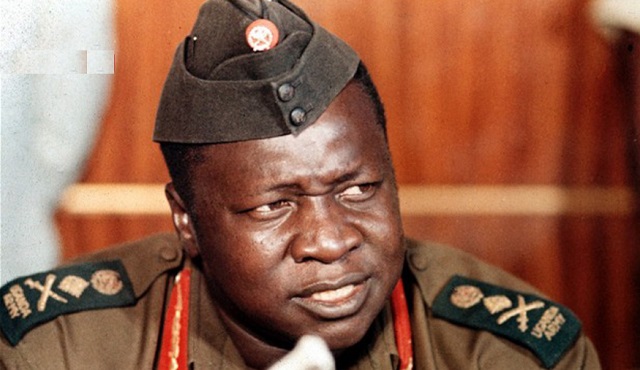
Remembering the Moshi Spirit of the 1979 liberation war
Kampala, Uganda | THE INDEPENDENT | This week marked 40 years since a combined force of armed groups of Ugandan exiles under the Uganda National Liberation Front/Army (UNLF/A) and the Tanzania Peoples Defence Forces (TPDF) toppled the government of then-president of Uganda, Field Marshal Gen. Idi Amin Dada.
Amin’s forces were routed from the capital Kampala on April 11 after a quick six-month war that begun on October 30, 1978. The specific trigger of the war remains unclear to this day. But the events are not disputed.
According to many accounts, on the auspicious Independence Day of October 09, 1978, there was a minor cross-border clash between a lone Ugandan soldier, his Tanzanian lover, and a fight with Tanzanians men in a bar.
Following the lone incident, the Uganda army invaded Tanzania on the orders of Lt. Gen. Juma Oka Mafali aka Butabika (the mad one) . This is significant because, according to some accounts, Butabika did not consult or get authorisation from Amin to invade Tanzania and appeared to be reacting to the lone soldier incident because he was a relative.
However, according to some versions, Gen. Butabika’s move was carefully calculated to push Amin into a war with Tanzania. Many generals in Amin’s army allegedly wanted the war but Amin had refused to attack Tanzania although he spoke often of annexing the Kagera region.
The environment was tense. Tanzanian President Julius Nyerere had never recognised Amin as president and kept many Ugandan dissidents, including former president Milton Obote in Dar es Salaam. The exiles occasionally launched attacks on Uganda.
However, by October 18789, Amin’s warmongering soldiers had become restless – just like the rest of the country. According to renowned Ugandan historian, Phares Mukasa Mutibwa, in his book `Uganda Since Independence: A story of Unfulfilled Hopes’, Amin was also beginning to lose control of the army and the country around this time.
Mutibwa writes that in April 1978, a major rift within the inner core of Amin’s government was revealed when he publicly denounced his Vice President and Minister of Defence, Gen. Mustafa Adrisi together with Brig. Moses Ali; the Minister of Finance, and Maj. Gen. Isaac Lumago; the Army Chief of Staff. Others similarly condemned by Amin were Kassim Obura; the Chief of Police and Lt. Col. Nasur; the Commander of the dreaded Malire Mechanised Regiment based in the current Lubiri, seat of the Buganda Kingdom.
According to Mutibwa; at least four senior army officers confronted Amin in the middle of 1978 and told him point-blank to step down and handover to a civilian government. Amin reportedly told them he would think about. But knowing him, the soldiers fled and joined a mutinous battalion of Amin soldiers based at the Simba Battalion in Mbarara. To quell down the mutiny, Amin reportedly moved the Chiu Battalion from Gulu to Mbarara. But the Chui battalion instead joined the mutineers. To quell down the insurrection, Amin reportedly called in his special forces; the Marine Brigade backed by some fresh trainees. But these were badly beaten in battle.
It was, therefore, within this volatile situation that the lone soldier reportedly caused the skirmish across the Tanzanian border on October 09, 1978.
Conspiracies and attacks
All these conspiracies and events are often interpreted differently by different analysts to serve different agendas.
Just a few days before the October 09, 1978 border incident, for example, unknown attackers had ambushed Amin at the Presidential Lodge in Kampala (the current Nakasero State House). They intended to kill him but Amin escaped by helicopter. Such attempts on Amin’s life were nothing unusual. But soon after this, Amin’s Vice President, Gen. Mustafa Adrisi was injured in a car accident and Amin was reportedly suspected to have attempted to kill him. However, Adrisi who died in 2013 never accused Amin of this.
Therefore, whatever triggered what came to be called the “Liberation war of 1979” is not clear. But the war moved swiftly.
After pushing back Amin’s men and launching a hot pursuit, the invading force advanced faster than anticipated. Mbarara, which is about 130km away and was home to the dreaded Simba Mechanised Infantry Regiment, easily fell in late February.
Then the invading forces; called the liberation army pushed on to Masaka. There were fierce battles here and the Tiger Battalion in Masaka was captured much later on April 6. But the invaders had already moved past Masaka for Kampala.
When they started leaving Masaka for Kampala, a few Libyan soldiers tried to stop them as the rest of the Amin’s army appears to have mutinied or fled. These small bands of lost and hungry Libya souls, mercenaries whom Muammar Gadhafi had sent in to aid Amin appeared to be fighting for their survival not Amin. They had nowhere to run to as they did not know the area or speak and, as Arabs, were conspicuous in appearance.
Gadhafi appears to have sent his men half-heartedly; believing that under the non-interventionist treaty of OAU member states, President Julius K. Nyerere of Tanzania would be prevailed upon to end the invasion and not capture Kampala or topple Amin. Gadhafi was aiding Amin as a fellow Muslim.
Nyerere also appears to have been of the view that taking Kampala was not the objective of the war. However, five months into the war, Nyerere possibly realised that any withdrawal that left Amin in power would have irreparable consequences. It was clear that Amin would exact revenge on the residents of especially Mbarara and Masaka. The ensuing chaos could create a flood of refugees into Tanzania. Nyerere was keen to avoid that.
 The Independent Uganda: You get the Truth we Pay the Price
The Independent Uganda: You get the Truth we Pay the Price


